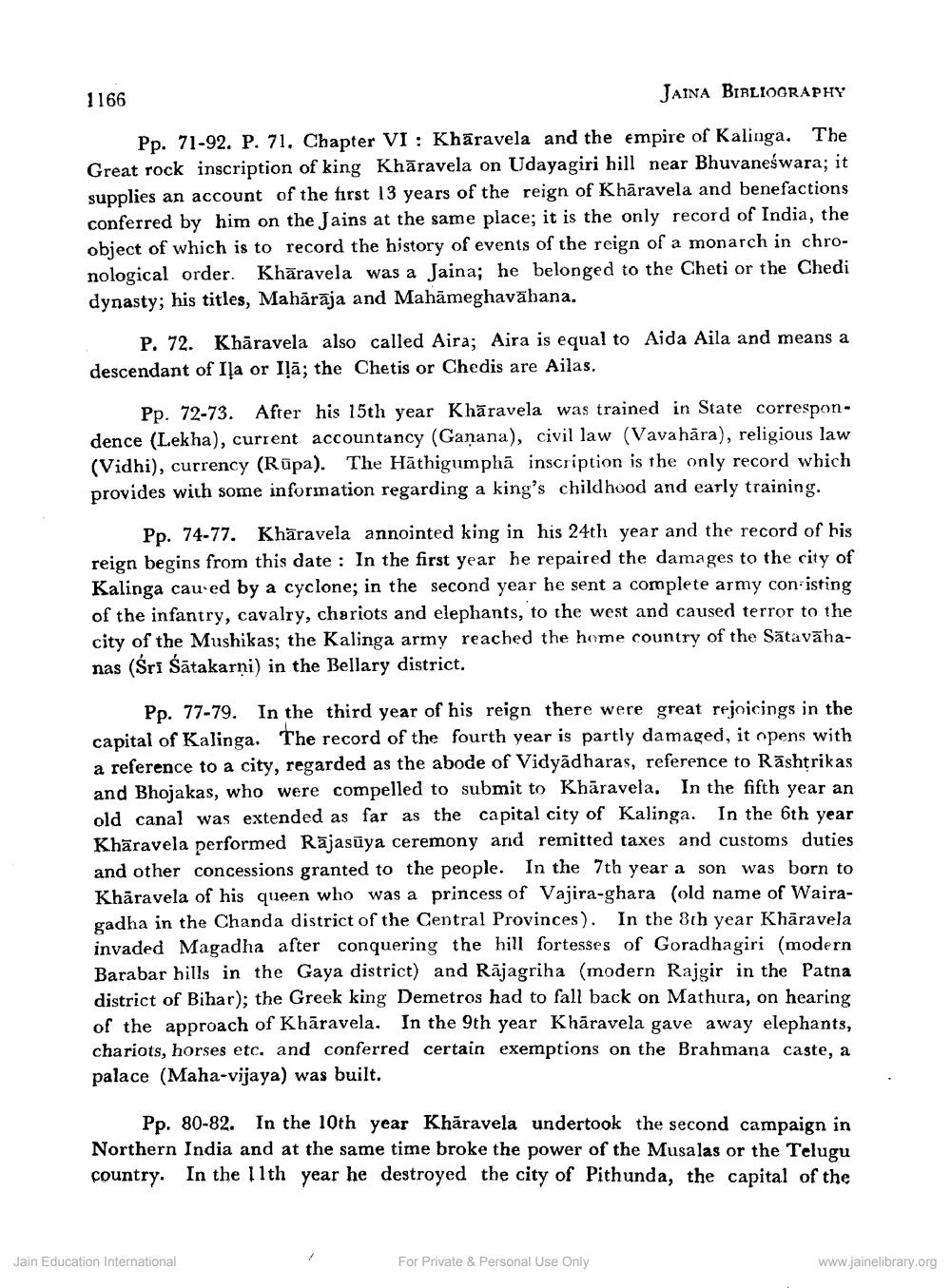________________
1166
JAINA BIBLIOGRAPHY
Pp. 71-92. P. 71, Chapter VI : Khāravela and the empire of Kalinga. The Great rock inscription of king Khāravela on Udayagiri hill near Bhuvaneswara; it supplies an account of the first 13 years of the reign of Khāravela and benefactions conferred by him on the Jains at the same place; it is the only record of India, the object of which is to record the history of events of the reign of a monarch in chronological order. Khāravela was a Jaina; he belonged to the Cheti or the Chedi dynasty; his titles, Mahārāja and Mahāmeghavähana.
P. 72. Khāravela also called Aira; Aira is equal to Aida Aila and means a descendant of Iļa or Iļā; the Chetis or Chedis are Ailas.
Pp. 72-73. After his 15th year Khāravela was trained in State correspondence (Lekha), current accountancy (Ganana), civil law (Vava hāra), religious law (Vidhi), currency (Rūpa). The Hāthigumphā inscription is the only record which provides with some information regarding a king's childhood and early training.
Pp. 74-77. Khāravela annointed king in his 24th year and the record of his reign begins from this date : In the first year he repaired the damages to the city of Kalinga cau.ed by a cyclone; in the second year he sent a complete army con-isting of the infantry, cavalry, chariots and elephants, to the west and caused terror to the city of the Mushikas; the Kalinga army reached the home country of the Sātavāhanas (Šri Šātakarni) in the Bellary district.
Pp. 77-79. In the third year of his reign there were great rejoicings in the capital of Kalinga. The record of the fourth year is partly damaged, it opens with a reference to a city, regarded as the abode of Vidyadharas, reference to Rāshtrikas and Bhojakas, who were compelled to submit to Khāravela. In the fifth year an old canal was extended as far as the capital city of Kalinga. In the 6th year Khāravela performed Rājasūya ceremony and remitted taxes and customs duties and other concessions granted to the people. In the 7th year a son was born to Khāravela of his queen who was a princess of Vajira-ghara (old name of Wairagadha in the Chanda district of the Central Provinces). In the 8th year Kharavela invaded Magadha after conquering the hill fortesses of Goradhagiri (modern Barabar hills in the Gaya district) and Rājagriha (modern Rajgir in the Patna district of Bihar); the Greek king Demetros had to fall back on Mathura, on hearing of the approach of Khāravela. In the 9th year Khāravela gave away elephants, chariots, horses etc. and conferred certain exemptions on the Brahmana caste, a palace (Maha-vijaya) was built.
Pp. 80-82. In the 10th year Khāravela undertook the second campaign in Northern India and at the same time broke the power of the Musalas or the Telugu country. In the 11th year he destroyed the city of Pithunda, the capital of the
Jain Education International
For Private & Personal Use Only
www.jainelibrary.org




